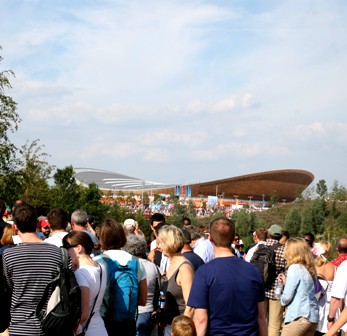
The Olympic velodrome: now open for business
Edition number 71; dateline 10 March 2014
Seeking the legacy of unintended consequences
It has taken a little while but at last the facilities that provided the various focal points of London 2012 have begun to open to the public in their post-Games configurations. The news page in this issue includes references to the Lee Valley white-water facility, the velodrome – now the centrepiece of what we are being invited to refer to as a ‘velopark’ – and, of course, the Olympic pool.
It was no surprise that the pool took most of the headlines – swimming is the Olympic pursuit that is most accessible to the general public and the pool is the Olympic facility that will get most use – but the pool’s opening delivered a raft of positive news stories and some much-needed profile for publicly owned and operated leisure facilities. Below the headlines, most of the stories included reference to the £3.50 off-peak entry charge and many highlighted the charitable corporate structure of the facility’s management contractor, GLL. In fact quite a few the reports did little to hide their wonder that such organisations exist in the midst of an apparent decades-long political consensus that has allowed, and then pursued, the dismantling of local services and local government structures.
Nevertheless, as one would hope it was the facilities themselves that took centre stage. Zaha Hadid’s swimming complex, now returned to the architect’s original vision after the inelegant extensions of its ‘Games mode’, drew extensive plaudits. The interior has been found to be as remarkable and as graceful as the exterior, full of light, space and wonder. The velodrome, so often an elegantly dished sweep of timber and steel set in a miasma of construction, is now at the heart of a series of routes, tracks and circuits that will bring all kinds of wheeled sport to the Olympic Park. The Copper Box, open a little while since and also managed by GLL, remains a striking feature of the landscape ready to add its name to London’s leading indoor venues.
For the media the legacy of the Olympic Park and its built facilities is an easier story to tell, while for the public it is an easier story to embrace: here are the tangible assets of the Olympic investment and, better yet, we can go through the turnstiles and use them whenever we want. For the departments and agencies that adhered the official mantra of participation as a the true legacy of the London Games for as long as they could, moving talk of legacy towards the buildings and away from the processes that were to have transformed participation across the UK will probably come as something of a relief. Later they may be able to reflect on how quickly the opportunity of a genuine transformation of attitudes and engagement ebbed away in the absence of a full-scale government commitment to deliver against the initial aspirations.
While that should be a cause for regret, it should not have come as a surprise. At the Leisure Review, we were resigned to having to rely on the legacy of the built facilities as soon as the concept of the International Friend Ship had been scuppered; and the absence of a London 2012 medal for poetry still rankles. However, we were equally convinced that the regeneration of a tract of east London and the construction of some of the world’s finest sports facilities would ultimately represent money well spent.
In time, as the Olympic Park is thrown open to the public and we get used to the legacy we have instead of what might have been, we will at least be able to enjoy the benefits of a different perspective on London 2012. There will be the stories of young people who were inspired to get involved with sport by their memories of the Games. There will be medallists who speak warmly of opportunities presented by London 2012 facilities. There may be unlikely pockets of participation that pop up in unexpected places, like Olympic seeds travelling on the wind from east London to fertile ground a long way off the tube map. My own hope is that we are able to recognise and enjoy the rich legacy of unintended consequence that always accompanies any major initiative. If this were to include an wider appreciation of the fact that real ambition lies in the collective experience – the power to imagine, to think and to dare together – then it would be a legacy worthy of the name.
Jonathan Ives
Editor
letter from the editor
The Leisure Review editorial
